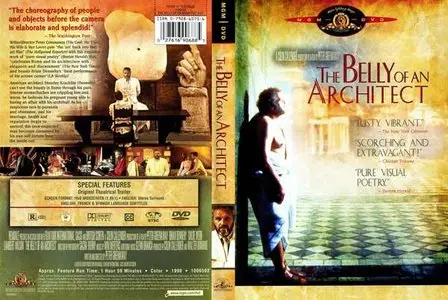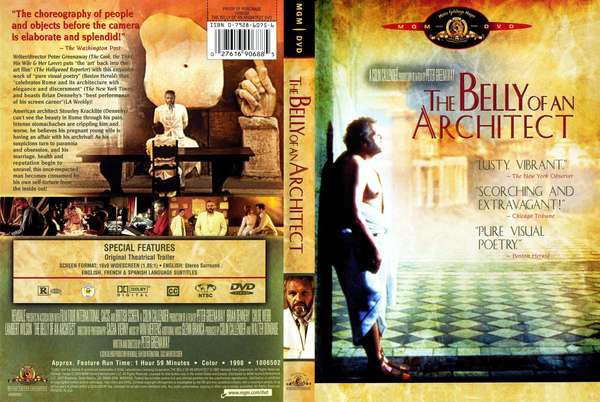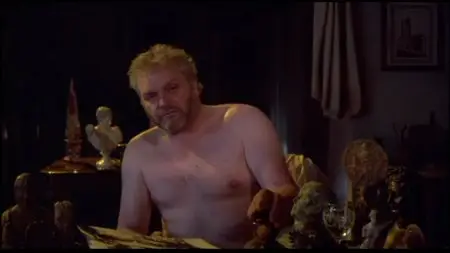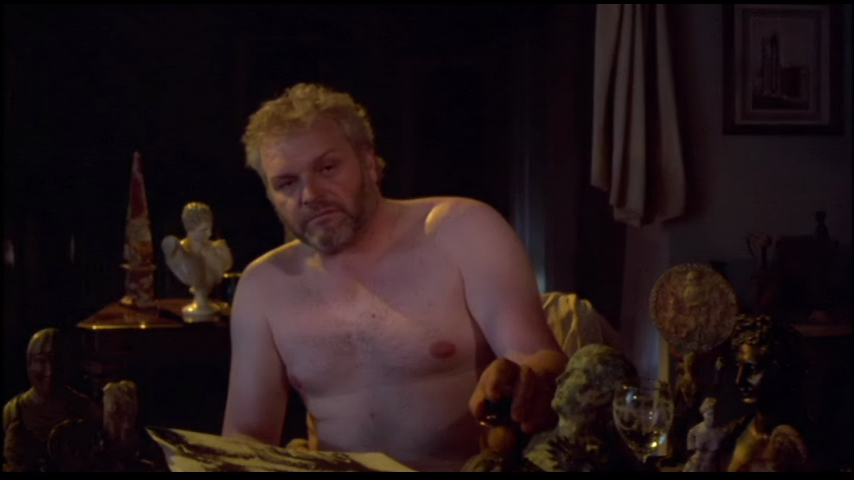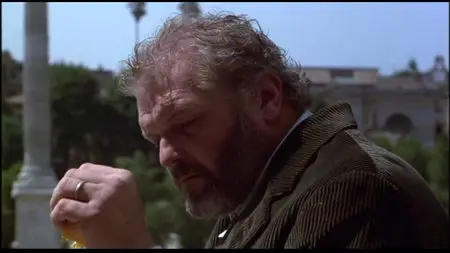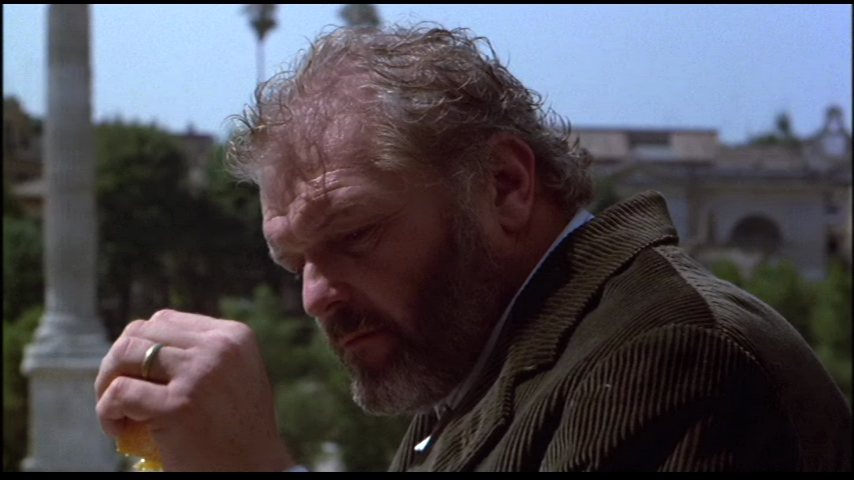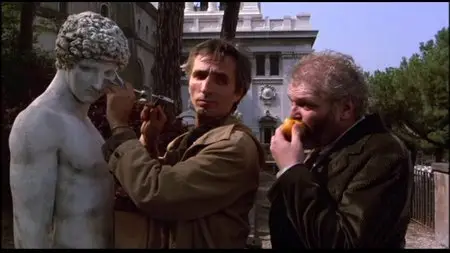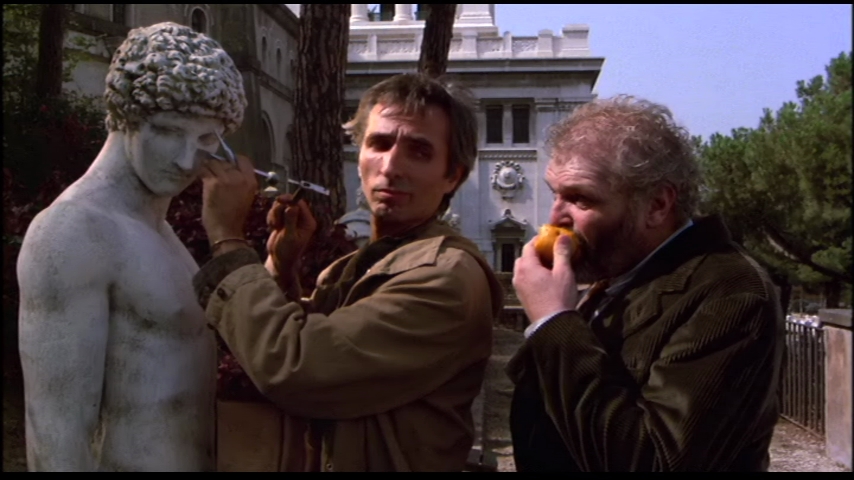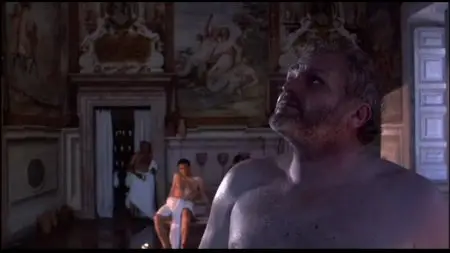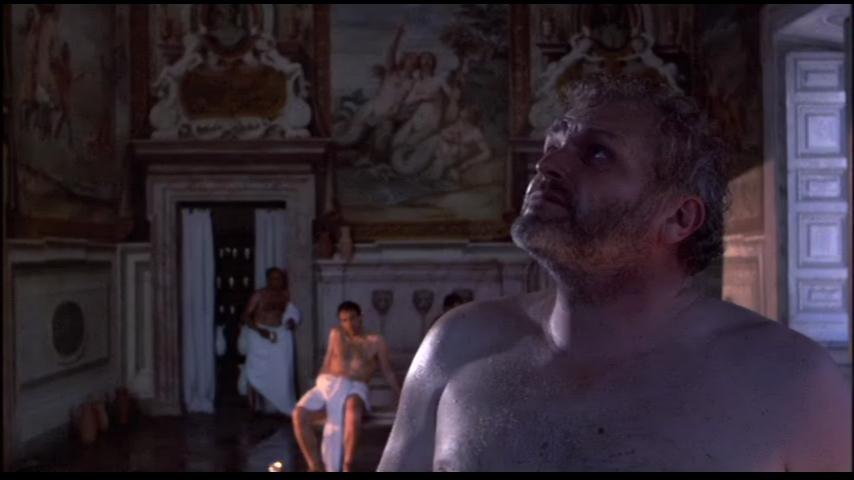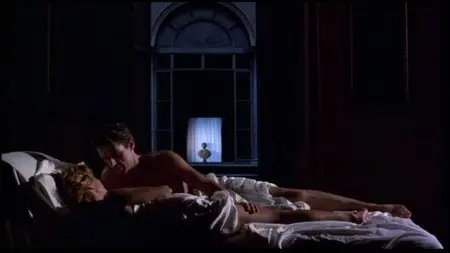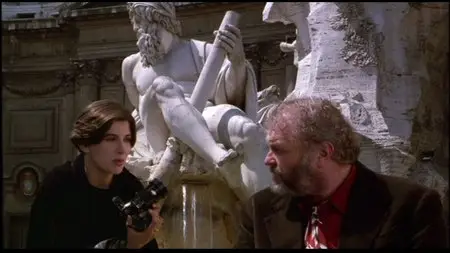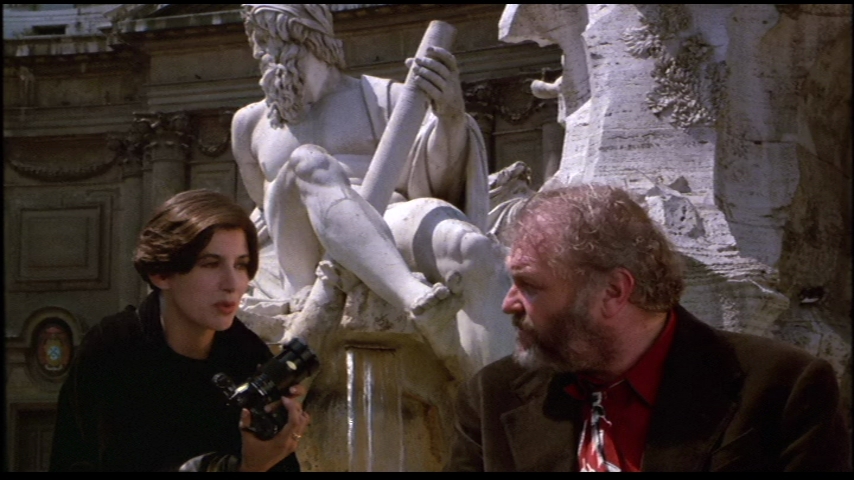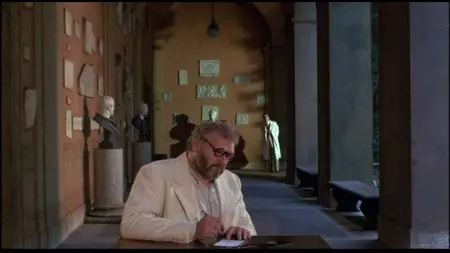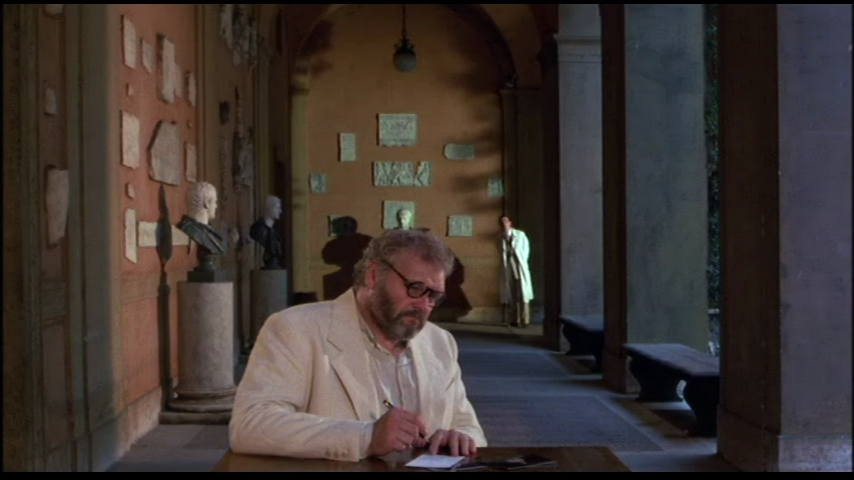The Belly of an Architect (1987)
A Film by Peter Greenaway
DVD5 | VIDEO_TS | NTSC 16:9 (720x480) | Cover | 01:58:35 | 4,27 Gb
Audio: English AC3 2.0 @ 192 Kbps | Subtitles: English, French, Spanish
Genre: Drama
A Film by Peter Greenaway
DVD5 | VIDEO_TS | NTSC 16:9 (720x480) | Cover | 01:58:35 | 4,27 Gb
Audio: English AC3 2.0 @ 192 Kbps | Subtitles: English, French, Spanish
Genre: Drama
American architect Stourley Kracklite (Brian Dennehy) comes with his young wife Louisa (Chloe Webb) to Rome to supervise an exhibition devoted to Etienne-Louis Boullée, a French architect of the 18th century. Suffering from severe abdominal pains, Stourley doesn't pay much attention to his pregnant wife, and she finds consolation in the arms of suave Caspasian Speckler (Lambert Wilson). Built from rigidly symmetrical images, the film has quite an unusual subject: the belly – both the sick one of the architect and the pregnant one of his wife, the rounded forms alluding to the spherical constructions designed by Boullée, the architect whose visionary projects seldom materialized. Beautifully shot on location in Rome, this ironic fable wittily examines the issues of artistic creativity.
IMDB
Starring Brian Dennehy, an unusual actor for a Peter Greenaway film, as Kracklite, an architect, a career we don't often see explored in cinema, Greenaway's 'Belly of an Architect' is somehow bigger and more emotionally ambitious than most of his other works, which lack human resonance. In his other films, the characters are uniformly British and so Greenaway's coldness and archness toward them is indicative of a general misanthropy. Here, it's aimed squarely at Romans, whose loose morals and carnivorous practices contrast with the enormity of Kracklite's ego and generosity of spirit. His stomach is being eaten away by some unknown illness or cancer, and this serves as a metaphor for his ego being eaten away by the carnivorousness of Roman culture. His wife, his identity (which is a vicarious one, given his devotion/debt to his idol, Bouleé) and his work are being repossessed by the conquestful Roman carnivores who aim to destroy him simply for the material gain of taking what is so ostentatiously his. But his devotion to Bouleé, his need to make Bouleé's work more widely known, is not a singular or altruistic act; the exhibition he is organizing will make Bouleé more commercial and accessible, but it will also be an addendum to his own career, a manifestation of his ego. His diary is written in the form of letters to Bouleé, to whom he is almost praying as his own personal God. And his devotion to this God is not a selfless one, since Bouleé is so inexorably an element of his own identity.
Rome and its buildings are given a golden, postmodern glow, their clarity enhanced by Wim Mertens' musical score, which adds its own sunlight to the proceedings. But the sunlight that glows throughout Rome and permeates the aura of the film is an impersonal one, an indifferent one, as ancient as the ruins of Rome, which our Roman characters observe have been more useful and influential as ruins than they were prior. "They're better as ruines," a character observes. "Your imagination compensates for what you don't see, like a woman with clothes on." The Romans are depicted here as carnivores (and the word "carnivore" is used multiple times) who not only want to devour and repossess, but want to strip. Brian Dennehy's performance here is indeed stripped, larger than life, fiery. He explodes on screen, bringing the film into another realm, introducing emotional dimensions not often seen in the films of Greenaway; and in this, the film has a power that inhabits the movie's symmetrical form (mostly every shot is symmetrical), its architecture, and threatens to destroy it. The coldness that is typical of Greenaway, that architecturized godlessness, is at war with fiery human passion in all its flawed nakedness.
Greenaway's movies, in their arctic wit and obsession with symmetry, are cinema as architecture more so than storytelling, so 'The Belly of an Architect,' contrary to the claim by many that it's his most mainstream and therefore weakest work, is perhaps his most appropriate film, and maybe his bestIMDB Reviewer,
36 out of 39 people found this review useful
Wildly out of step with his previous two films, Peter Greenaway's The Belly of an Architect moves far away from the pastoral England of his early work and instead glides through the austere, vaguely ominous streets of Rome where towering, crumbling architecture hovers godlike over the people below. Ostensibly a game of emotional musical chairs played with an American, an Englishwoman, and two devious Italian siblings, the film is really a study of permanence (or lack thereof), as legacies both fulfilled and still growing overshadow the pain of lives destined to be cut short.
The titlular architect, Stourley Kracklite (Brian Dennehy), arrives in Italy by train while still in the throes of passion with his wife, Louisa (Sid and Nancy's Chloe Webb). That night they're welcomed with a gala dinner inaugurating Kracklite's newest project, overseeing the research and restoration for an installation devoted to the French architect Etienne-Louis Boullée. Meanwhile nature has two surprises in store: Louisa is now pregnant, and Stourley is suffering from advancing stomach cancer. Stourley plunges headlong into his own private obsessions, repeatedly photocopying architectural designs, wandering the great buildings of Rome, and ignoring the needs of his wife who soon falls into the arms of one of Stourley's patrons, Caspasian Speckler (The Matrix Reloaded's Wilson), who plots with his sister, Flavia (Suspiria's Casini), to usurp all of the glory and potential cash from Kracklite's project.
In terms of plot and visual fillips, this is still one of Greenaway's most minimalist films; the drama moves along its nine-month course in a simple, accessible manner (next to Drowning by Numbers, this would be the best place for Greenaway newcomers to begin), largely eschewing the eccentric peripheral characters who populate most of his other films. Most significantly, this was Greenaway's first film with a strong human pulse thanks to Dennehy's impassioned performance; not surprisingly, Greenaway's next three films were as much actors' showcases as they were aesthetic studies. Cinematographer Sacha Vierny returns again with his trademark gliding camerawork, conjuring up some breathtaking visuals around various Roman landmarks. Even such simple devices as a child's top and billowing curtains become objects of visual delight through his lens, making his absence from world cinema now especially regrettable. Regular composer Michael Nyman had to step out of this project due to other commitments, but his position is more than ably filled with a stunning score from modern classical favorite Wim Mertens (with a handful of somber cues from Glenn Branca still remaining after most of his score was rejected).
Barely released upon completion, The Belly of an Architect received a token run in British cinemas from Film Four but didn't reach American audiences until 1990 after the surprise success of Greenaway's The Cook, the Thief, His Wife & Her Lover. Unfortunately Hemdale's video transfer captured little of the film's visual sheen, burying it in an ugly, cropped transfer swabbed in murky tones of brown. The Japanese DVD (which optically censored Casini's frontal nudity) was a slight improvement but still cropped and very soft. MGM's DVD offers the closest approximation to the theatrical experience, with a good color palette and much better framing; here's a film where anamorphic enhancement is really essential to catching all of the details within each shot. The surround audio sounds solid, limited mainly to the propulsive score. The only extra is the Hemdale theatrical trailer.
Special Features: Theatrical trailer only
Many Thanks to Original uploader.
If you want to download it, but found out that links are dead,
just leave a comment or PM me!
just leave a comment or PM me!
No More Mirrors.


